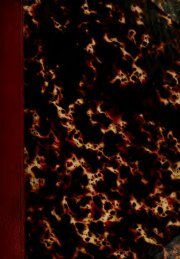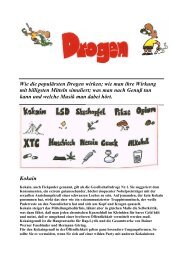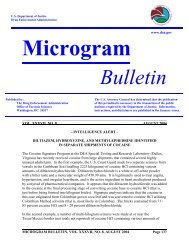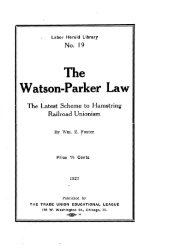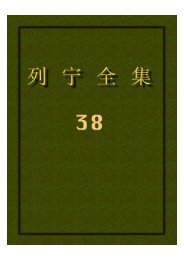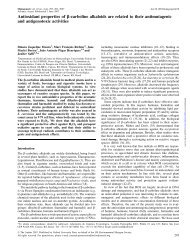Elfspice's Compleat Acacia Extraction Guide
Elfspice's Compleat Acacia Extraction Guide
Elfspice's Compleat Acacia Extraction Guide
Create successful ePaper yourself
Turn your PDF publications into a flip-book with our unique Google optimized e-Paper software.
go to table of contents<br />
The Plant<br />
This guide is specifically targeted at the acacia obtusifolia, I cannot really enlarge<br />
upon other information already available through libraries and on the internet,<br />
but I intend to replace this section with a comprehensive guide to finding them<br />
based on a series of expeditions to likely locations and lots of photographs, and,<br />
of utmost importance, in plain english.<br />
One of the problems with the botanical information regarding these plants is that<br />
they never go into much detail about the bark structures. When walking through<br />
a well developed forest, quite often the tree is so far above you that you can't see a<br />
thing of what they describe in the botanical description. As soon as possible, a<br />
photographic expedition will be made to bring back good photographs of the<br />
plant in it's mature natural state. The full extent of the obtusifolia's habitat is not<br />
fully known, it may well be more common than is currently thought.<br />
The guide should be applicable to other sources of DMT, as the method described<br />
is very thorough.<br />
go to table of contents<br />
Equipment and Chemicals<br />
Other, more advanced chemistry equipment can be used for this process,<br />
however my aim is to only talk about what I believe to be the minimum standard<br />
to ensure the best possible results.<br />
1. Large Cooking Pot - for beginners it is wise to start small, 2-4L soup<br />
pots are good for this. Do NOT use aluminium pots for this stage,<br />
even organic acids will take up some of the aluminium oxide on<br />
the coating and the aluminium will react with strong acids to<br />
produce aluminium salts (eg aluminium chloride) and this is<br />
not something that one wants to need to get rid of, let alone<br />
ingest.<br />
2. Glass baster - this is a large pipette used to suck up oils from fowl being<br />
roasted in the oven and coating them so they get nice and golden crispy on<br />
top. A baster has a long glass tube and a rubber squishy thing at the end<br />
and it works like a dropper. Generally they can hold about 30-40ml. Glass<br />
is essential because these devices can be used to separate immiscible<br />
phases. These devices are available at most kitchen shops. I just want to<br />
emphasise again - make sure it is glass - some of the solvents used will<br />
attack plastics (especially nylon, which is the common plastic baster<br />
material because of it's high melting point) and metal is completely useless<br />
for this purpose. Also it is good if the device has a tip on it which is very<br />
narrow for half a centimetre or so, this improves this device's ability to<br />
precisely separate fractions and how well it holds the fluid when removed<br />
when held mid-air.



